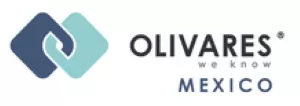REGULATORY OVERVIEW
1. What are the main legislation and regulatory authorities for pharmaceuticals in your jurisdiction?
Legislation
The primary legislation for medical products is:
- The General Health Law (Ley General de Salud) (General Health Law).
- The Health Law Regulations (Reglamento de Insumos para la Salud).
- The Official Mexican Norms (Normas Oficiales Mexicanas) (NOMs).
- Mexican Pharmacopoeia.
Regulatory authorities
The regulatory authority in this field is the Federal Commission for Protection against Sanitary Risk (Comisión Federal para la Protección contra Riesgos Sanitarios) (COFEPRIS) (www.cofepris.gob.mx) which is an administrative agency of the Ministry of Health (Secretaria de Salud).
2. Briefly outline how biologicals and combination products are regulated in your jurisdiction.
Both biologics and combination products must have marketing authorisation from COFEPRIS. Roughly, biologics are classified into:
- Biologics of reference (usually innovators).
- Biocomparables, a term used instead of biosimilars, in view of social context issues with the term in Spanish (similares).
Requirements and application timeframes differ in each case.
Given their particular features, combination products can be classified as either drugs (drug/biologic) and/or medical devices (drug/device). Requirements and application timeframes differ in each case. A combination product may require separate drug or biologic and medical device approvals (see Questions 3. and 9).
3. Briefly outline how medical devices and diagnostics are regulated in your jurisdiction. Is there any specific regulation of health IT issues and mobile medical applications?
The primary legislation for medical devices and diagnostics is the General Health Law, its regulations and the NOM for good manufacturing practices regarding medical devices (NOM-241-SSA1-2012).
According to their use, Article 262 of the General Health Law classifies medical devices into:
- Medical equipment.
- Prosthetics, orthotics and functional supports.
- Diagnostic agents.
- Dental supplies.
- Surgical and healing materials.
- Hygiene products.
Marketing authorisation requirements for these devices depend on the level of risk involved in their use, according to a threefold classification:
- Class I. Products well-known in medical practice for which safety and efficacy have been proven. They are not usually introduced into a patient's body.
- Class II. Products well-known in medical practice, but may have material or strength modifications. If introduced, they remain in a patient's body for less than 30 days.
- Class III. Products either recently accepted in medical practice or remain in a patient's body more than 30 days.
COFEPRIS analyses both medical devices and, if applicable, software that enables them to work. Conversely, mobile medical applications are a new area that COFEPRIS may address in future by particular regulations, especially if they represent health risks.
As an incentive, applicants can benefit from a special procedure for certain devices to be approved in Mexico, which have been previously approved by the:
- US Drug and Food Administration.
- Health Canada.
This procedure is essentially based on the dossier filed with the foreign regulatory agency, to reduce approval timeframes by up to 30 working days. Industry participants have welcomed these new rules, but they are still being tested.
PRICING AND STATE FUNDING
4. What is the structure of the national healthcare system, and how is it funded?
The Ministry of Health:
- Governs the health system in Mexico.
- Manages social security and health insurance.
- Determines the National Formulary for the list of basic drugs (Cuadro Básico de Insumos para la Salud).
The Mexican healthcare system comprises public (social security institutions) and private insurers, out-of-pocket payments and informal arrangements.
The major public segments of the Mexican healthcare system are:
- The Mexican Institute of Social Security (Instituto Mexicano del Seguro Social) (IMSS). This represents social security for the self-employed and employees in private companies.
- The Institute of Social Security for State Workers (Instituto de Seguridad y Servicios Sociales de los Trabajadores del Estado) (ISSSTE).
- The Seguro Popular. This is a programme created in 2004 as part of a strategic reform to the General Health Law. It provides a public insurance scheme for those not covered by social security and other formal arrangements. The Seguro Popular was created to cover people with lower incomes. The Federal Government pays 70% of the annual family premium, states provide 20% and patients provide 10%.
- Other social security institutes for particular sectors, for example for members of the military and Mexican Navy Force (Instituto de Seguridad Social para las Fuerzas Armadas Mexicanas ISSFAM and Secretaria de Marina Armada de México SEMAR), and for Mexican petroleum workers (PEMEX Medical Services).
Private health insurance generally covers professional, executive and higher levels of the private sector. Enrolment in private health insurance has increased considerably over the last five years.
The public health sector normally faces financial problems and implements measures to limit costs, for example, by pressing for price reductions in consolidating public bids (involving the most important health institutions) and encouraging competition.
5. How are the prices of medicinal products regulated?
Price control in the private sector is based on a scheme of self-regulated maximum retail price (MRP) covering patented products, overseen by the Ministry of Economy. Pharmaceutical companies' participation is voluntary. Under the price control each product's MRP must not exceed an international reference price, estimated as the average price in six major markets, plus a market factor. There are no established sanctions for violations of the MRP.
In 2008, the government created the Committee for the Negotiation of Drug Prices (CNDP) to:
- Support public acquisitions through a process of transparent negotiation between public insurers and pharmaceutical companies.
- Evaluate cost-benefits of new medicines and therapies in view of prices and other comparable products in the market.
6. When is the cost of a medicinal product funded by the state or reimbursed? How is the pharmacist compensated for his dispensing services?
Commonly, public insurers dispense medicinal products prescribed by their healthcare professionals. Products are prescribed from a basic medicinal products list, which public insurers essentially base on the National Formulary issued by the Ministry of Health. Public insurers acquire those listed products mostly by public tender processes. IMSS is the largest public sector buyer of drugs.
For direct purchasing of patented products, CNDP analyses the effectiveness of the drugs and relevant therapeutic alternatives, and the feasibility and implications of an eventual substitution with equivalent medicines. Also, CNDP conducts an economic evaluation of the cost-effectiveness of patented medicines compared with those potential substitutes.
For ISSSTE, a prescribed medicinal product can be dispensed in a private drug store registered with this public insurer, provided that this is not available within ISSSTE facilities and under certain conditions. ISSSTE reimburses the cost of that product according to previous agreements.
In the private sector, most payments are made on an out-of-pocket basis. Private insurers are currently improving the level of pharmaceutical coverage as the private market in medicines has grown considerably.
CLINICAL TRIALS
7. Outline the regulation of clinical trials.
Legislation and regulatory authorities
The primary legislation for clinical trials is the Health Law Regulations for Health Research (Reglamento de la Ley General de Salud en Materia de Investigación para la Salud) (RLGSMIS) and the NOM for Health Research in Human Beings (NOM-012-SSA3-2012). The Guideline for Good Clinical Practice E6(R1) is taken into account.
This legislation is enforced by the Ministry of Health through COFEPRIS.
Authorisations
Any research on human beings must be approved by COFEPRIS. This research can include testing new medicinal products or new uses, dosages or administration routes for already approved medicinal products. Essentially, the main requirements for an application for authorisation from COFEPRIS are:
- Approval by an independent ethics committee registered with the Ministry of Health.
- Approval by the medical institution or institutions where the clinical trials will be conducted. These institutions must be approved by COFEPRIS to conduct clinical trials.
- Clinical trial protocol (including schedule and approximate amount of medicinal products to be imported).
- Written informed consent templates.
- Preclinical and clinical data that justifies conducting the research.
- Description of available resources to conduct the research and to address emergencies (including a statement of sponsorship).
- Written letter by the qualified investigator acknowledging his responsibilities, and data from both him and his staff.
Medical assistance and financial indemnification for damage caused by the clinical trial must be provided to research participants.
Consent
Investigators have to collect informed consent from research participants in a formal written document, also signed by two witnesses. Basically, the validity requirements for consent are that a participant grants it on a voluntary basis, with capacity to do so and sufficient information (knowing potential risks and benefits). Participants keep the right to give up the research anytime. Investigators must ensure post care for them, until it is clarified that there are no damages derived from the research.
Trial pre-conditions
Preclinical data must be collected to justify whether clinical trials can be conducted. The RLGMIS requires measures to ensure that the investigator does not have conflict of interest, to:
- Protect the rights of research participants.
- Maintain accurate results.
- Allocate resources.
Procedural requirements
The RLGMIS and the NOM for Health Research in Human Beings provide the guidelines and standards for the clinical trial protocol, including rules concerning documentation, compilation, confidentiality and reports.
Essentially, according to the NOM for Health Research in Human Beings, any clinical trial must be conducted following ethical guidelines and must always respect the dignity, rights and welfare of human beings.
Clinical trials can specify certain steps or goals to be achieved. The principal researcher must compile a final technical report for the clinical trial. When clinical trials last longer than one year, annual technical reports for the Health Authorities must be compiled. Accordingly, the following NOMs apply for:
- Medicinal products labelling (NOM- 072- SSA1-2012).
- Pharmacovigilance (NOM-220-SSA1-2012).
- Interchangeability and biocomparability tests (NOM-177-SSA1-2013).
- Biological products (NOM-257-SSA1-2014).
- Good manufacturing practices for medicinal products (NOM-059-SSA1-2015).
- Good manufacturing practices for active ingredients (NOM-164-SSA1-2015).
MANUFACTURING
8. What is the authorisation process for manufacturing medicinal products?
Application
Companies manufacturing medicinal products must obtain a manufacturing licence/approval (licencia sanitaria) from COFEPRIS.
Conditions
The requirements for manufacturing approval are set out mainly in the General Health Law, its regulations and NOMs setting good manufacturing practices for medicinal products (NOM-059-SSA1-2015) and health requirements for manufacturing (NOM-176-SSA1-1998). They regulate and provide guidelines and standards essentially for:
- Workforce conditions in the manufacturing facilities (including, for instance, responsibilities, uniforms, and medical examinations).
- Legal and technical documentation.
- Facility requirements.
- Manufacturing, validity and quality controls and protocols.
- Standard operation procedure.
- Biosafety measures.
- Packaging.
- Equipment.
- Destruction and elimination of waste.
Foreign applicants
To hold a marketing authorisation, applicants must have either (Article 168, Health Law Regulations):
- An approval from COFEPRIS for a manufacturing facility or laboratory for medicines or biologic products for human use in Mexico.
- An equivalent approval (a licence, certificate or other permit document) for any of these facilities abroad from the competent authority in the country of origin.
Key stages and timing
The Health Law Regulations set 60 working days as the timeframe for reviewing an application for a manufacturing approval. This is reduced by up to ten working days if the application has been previously reviewed by an authorised third health institution (private/public company authorised by COFEPRIS to review regulatory submissions).
COFEPRIS ensures that applicable NOMs are followed, beginning when a facility begins production and at least every two years after then.
Fee
Government fees for analysing a manufacturing approval application are around US$6,000.
Period of authorisation and renewals
Manufacturing approvals are granted without a specific expiration date. However, any modification of the list of manufactured products or change of address must be approved by COFEPRIS.
Monitoring compliance and imposing penalties
COFEPRIS has a permanent pharmacovigilance programme. Under the Health Law Regulations and NOMs, COFEPRIS's monitoring is focused, among other things, on the following:
- Ensuring compliance with good manufacturing practices and standard operating procedures.
- Ensuring that activities performed do not exceed either authorised limits nor differ from those authorised activities.
- Ensuring that companies perform validation analyses of their manufacturing processes and systems involved.
COFEPRIS is entitled to implement measures on behalf of public health, such as:
- Seizure of products.
- Ordering partial or total suspension of activities, services or adverts.
Under certain conditions, COFEPRIS has statutory authority to revoke any manufacturing approval and/or impose sanctions, ranging from a fine of up to 16,000 times the minimum wage (about US$64,000), to closure of the establishment.
The imposition of administrative sanctions does not exclude civil and criminal liability.
To read this article in full, please click here.
The content of this article is intended to provide a general guide to the subject matter. Specialist advice should be sought about your specific circumstances.


